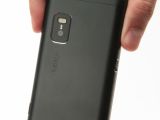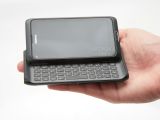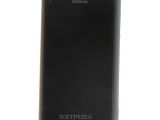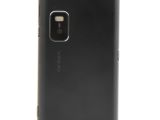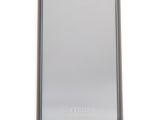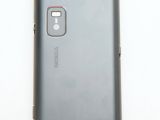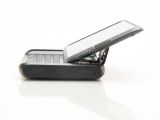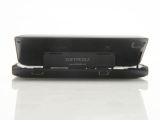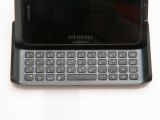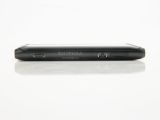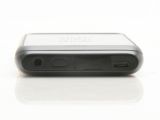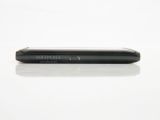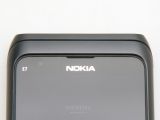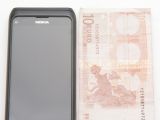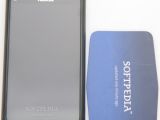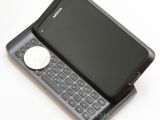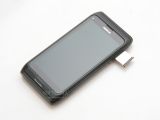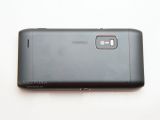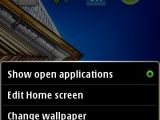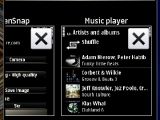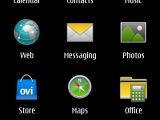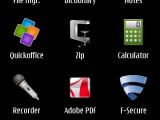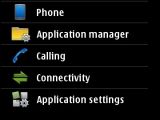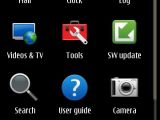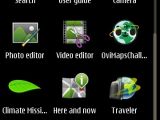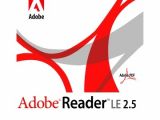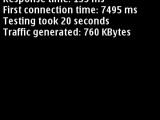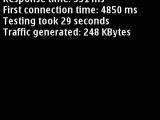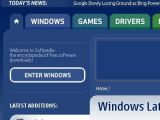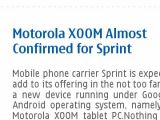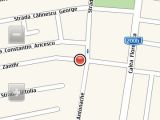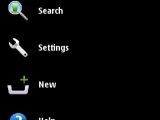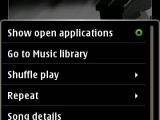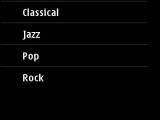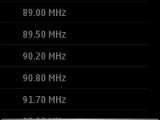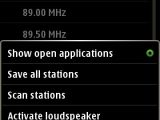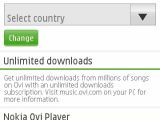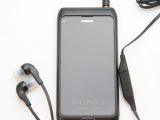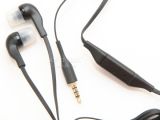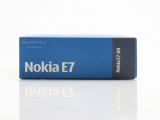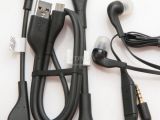Since Nokia E7 specs sheet leaked in the wild, it was clear that for the first time Nokia's flagship smartphone will not be an Nseries device. After teasing the market with the N8, which was mildly received by the fans, the E7 can be considered the company's comeback.
For those who already had the chance to experience the N8, the E7 is pretty much the same but on a larger scale, thanks to the 4-inch display.
Although the smartphone was launched after Nokia announced that is ditching the Symbian OS for the Windows Phone 7, as its first tier mobile platform, the manufacturer didn't hold back when came to quality.
The fact that this is an Eseries device makes it an obvious choice as a business smartphone, but in truth, the E7 is an all-rounder, which is exactly what Nokia wanted.
Either you're interested in taking pictures and share them on your social network account, or perhaps you wish to use the handset as a complex agenda and mobile office, the E7 can do all of these and then some more.
The fact that E7 comes to replace the N8 is a double-edged mission for Nokia, as this is likely to raise the users expectations. If the E7 will have at least the same level of success of the N8, than Nokia's mission will be accomplished.
style="color: #aa3333">Design
Nokia E7 features the same look as its N8 predecessor and is cut from a single aluminum block. The metal chassis makes it heavier than most of the smartphones in its size range, but gives it a solid look.
The slider bears the signature of the lead industrial designer Shunjiro Eguchi who used a pomegranate fruit as an inspiration to design the E7. Eguchi tried to make the phone look simple and minimalistic, and by our standards he was successful.
Apparently amazing things happened to the device while it was in testing stage, as the smartphone had no less than 10 (ten!) QWERTY keyboards variants, until the final version was decided upon.
Based on this fact we should assume that the E7 has the best QWERTY keyboard ever embedded into a Nokia device. However, even if this is true, how does the Nokia E7's keyboard fares against other brands? We already know that this is the best Nokia has done lately, but is it enough to beat the competition?One of the most important things while building a side-slider is the quality of the hinge that makes the phone more durable. Nokia E7 has a huge hinge, which is operated by a spring, thus helping users slide the phone more easily. Basically, you will only need to give the keyboard a small push and the spring will take over and finish the sliding move for you.
However, it took me some time to get used with this rigid mechanism. I'm not sure why, but the E7's slide-out keyboard needs to be pushed down a little bit by pressing your thumbs on both corners of the front face. One piece of advice, be careful when you slide the phone for the first time, as it may jump out of your hands.
Once you get used with the sliding mechanism you won't have any problems. That, or you'll be frustrated that you cannot slide it with only one hand.
The phone's keyboard features rubber-like and responsive keys, which are well spaced and arranged on four rows. The big size of the phone allowed the designer of the phone to go wild with the keyboard, so you'll have the time of your life while texting with the E7. Indeed this is the best keyboard Nokia has ever put into one of its handsets.This is one of the first keyboards that I had some success while trying to type without looking at the keys. If that doesn't mean anything, than try it for yourself.
To confirm the minimalistic approach, Nokia E7 features as little external keys as possible. There's only the lock/unlock sliding key placed on the left side on the phone. The right side includes a the shutter key, another sliding key that controls the phone's volume (clever), as well as a small port that allows users to insert the SIM card.
The stripe that covers the port is not the usual plastic stripe that protects it from getting too much dust; instead, it's the outside part of the metallic tray where the SIM card is inserted, so don't try to pull it out while the SIM is inside, as your phone will restart.The phone's mic is placed on the bottom side, so make sure you don't cover it with your hand during calls. On top side there's a microUSB port, an HDMI port, a 3.5mm audio jack and the power on-off button.
The only thing that seems to disturb the 'mojo' of the E7 is the fact that the microUSB port is not covered. Save for that, the rest of the external keys are blending perfectly into the phone's body, which gives the E7 the feeling of 'wholeness'.
Above the 4-inch touch screen there's the earpiece, in between the ambient light sensor proximity sensors to the left, and the secondary camera for video calling, which is placed next to the right.The 8-megapixel main camera on the back side of the phone features dual LED flash. Unfortunately, the camera was left totally unprotected, so as solid and durable the phone looks, the camera will always be its soft spot.
Obviously, the phone's battery cannot be pulled out, and this time it really cannot be replaced. There are no screws to be unscrewed or anything else that can be detached without seriously damaging the phone.
Overall, Nokia's job with the phone's construction is praiseworthy. The angular shape, the unibody form factor and the minimalistic approach is a sure win for Nokia.
style="color: rgb(255,102,0)">Display and Camera
Nokia E7 comes with the company's best mobile display technology on board, ClearBlack. Unlike N8's 3.5-inch AMOLED display, this one features a consistently larger 4.0-inch display of nHD (360 x 640 pixels) resolution.
Although ClearBlack technology isn't really something new it's a considerable improvement from the basic AMOLED displays. Nokia E7's touchscreen features a polarized filter on top that is supposed to block light, reduce reflections on the screen and improve visual image quality, especially outdoors.
Basically, with ClearBlack display the E7 is able to provide a high quality image in any type of situation, indoors, outdoors, low-light and bright-light. In addition, the phone's ClearBlack display adjusts the brightness automatically to optimum level depending on the conditions you are in, which will also save some battery life.
This is the second Nokia device that is delivered with this kind of display, after Nokia C6-01, that we already reviewed.
That being said, you won't have to worry about not being able to see what's displayed on the screen when the phone is exposed to strong sunlight. To make the entire phone extremely durable not just the body, the display is covered by scratch resistant Gorilla glass.
The phone also features built-in accelerometer for display auto-rotation, multi-touch input method, as well as proximity sensor for auto turn-off.
Even though it's the ultimate business smartphone, the E7 boasts a worthy 8-megapixel camera on board. However, the superior camera is crippled by the fact that it lacks autofocus, which was replaced with fixed focus. The latter makes the camera useless when you need to picture something at closer range.
The camera's interface requires users to tap at least twice to make any changes in the settings. Not the most user-friendly I would say. There's nothing extra included, but at least you get the same settings that have been embedded with the N8: White balance, ISO, Colors, Contrast, Sharpness and Scene modes. Face recognition is the only feature that might actually prove useful.In terms of quality, the E7 does good, but it's not among the best 8-megapixel cameras, on the contrary. The maximum resolution that users can set to take pictures is that of 3264x2448 pixels. The maximum resolution that can be used for movie recording is 720p@25fps.
Check out the samples below for a more accurate opinion about the quality of the photo snapper.
style="color: rgb(153,204,0)">Menu and Software
Although Symbian might not be the king of the world anymore, Nokia speeded the things up and made the ^3 considerably snappier than its predecessors. Even though users will not find anything new in terms of functionality, the cosmetic changes that the operating system suffered made it look more 'human'. However, Symbian^3 falls short when put head-to-head with younger mobile platforms.
The main home screen is now stretched on three panes and can be easily populated with widgets. These can be rearranged and mostly include shortcuts, contacts, or favorite websites. The interface considerably faster, even though the graphics have been improved. This doesn't seem to take its toll on the CPU, which means that Nokia's engineers have worked hard to optimize the OS.Furthermore, in comparison with previous version, Symbian^3 has been completely optimized for touch. However, the main menu has been kept the same, so you will get the same layout and a few customization options.
In addition to the kinetic scrolling, some tweaks have also been included, such as the quick launch of the Connectivity settings when you click near the battery icon, on the upper right corner of the homescreen. Also, the task manager shows small screenshots of the applications that run in the background. Unfortunately, you can only see three of these, so you'll need to scroll if you have more.
Clicking on the physical key below the display will bring up the main menu. The key can also be set to highlight when you receive a message or you missed a call. You can find the option into the Setting menu, under the Notification lights menu.The main menu can also be rearranged to look like a grid or list. The low number of folders included in the main menu might actually be a good idea, as you won't lose time scrolling for the needed folder. On the other hand the lack extra features might not be good for business. It's a double-edged situation, so the consumers are the only ones that will decide what's best for them.
There are number of of 'standard' apps that come pre-installed on the phone along with the Clock, Photo and Video editor, User guide, Social networking services, YouTube client, Search, Ovi music, Office, Notes, Mail and other Symbian-specific functions.
Some of the key applications that come pre-loaded with Nokia E7 include: complex calendar, calculator, converter, file manager, recorder, Adobe PDF, QuickOffice (full version), Zip, Dictionary, Message reader.There's no media sub-menu, but you get some dedicated apps under the Music menu: music player, Stereo FM RDS Radio, and Ovi Music. Podcasts have been removed from the menu; instead, you get Vlingo, an application that let you control the phone with voice. There's also an security solution bundled with the phone, F-Secure Anti-theft for Mobile.
As I mentioned above, Nokia E7 comes bundled with the full version of QuickOffice, which means users won't have to pay extra to edit new documents.
Overall, Symbian^3 is a step forward for Nokia, but it still needs lots of polishing to make it appealing. Let's hope that the upcoming Symbian Anna major firmware update will bring some of these needed changes.style="color: rgb(153,51,102)">Communication
The E7 is a quad-band GSM (850 / 900 / 1800 / 1900) slider, HSDPA 850 / 900 / 1700 / 1900 / 2100 (10.2 Mbps) and HSUPA (2 Mbps) compatible, which features GPRS and EDGE class 32. The smartphone is an all-rounder when it comes to connectivity. It has all the possible tools that one would need on the go. Wi-Fi 802.11 b/g/n, UPnP technology, Bluetooth 3.0 with A2DP, microUSB v2.0 and USB On-the-go support offer users enough connectivity options for any need.
The integrated browser is the same that included with the N8, but Symbian Anna promises a new one, which is three times faster. Nothing really new compared to the N8's web browser performance. You get Flash Lite 4.0 support, kinetic scrolling and pinch to zoom, as well as auto fill-in, RSS reader, download manager, password manager, pop-up blocker. The handset features a GPS receiver, which works in conjunction with Ovi Maps. The built-in GPS receiver features the A-GPS function, which makes localization even faster. In terms of messaging, the phone offers a complete solution, accepting all available message types. The message client works with POP3, SMTP, and IMAP4 protocols, and supports more than one email account. You can manage up to 10 different mail accounts with Nokia E7, which also includes Microsoft Exchange support. The quad-band (GSM 850 / GSM 900 / GSM 1800 / GSM 1900) network compatible smartphone has a very good GSM signal reception. The sound is very good at both ends, and pretty loud too thanks to the active noise cancellation technology.style="color: #aa3333">Processor and Memory
Nokia E7 is powered by and ARM11 family processor running at speeds of up to 680 Mhz with a Broadcom BCM2727 GPU (graphics processing unit). The device works pretty smooth, without having the usual hiccups and lags, unless a specific app requires a high amount of memory.
The smartphone also features 16GB internal memory, as well as 256 MB RAM and 1 GB ROM. The latter is an upgrade from the N8, which only packs 512 MB ROM. However, Nokia E7 does not feature a microSD card slot, which means you are limited to 16GB of storage.style="color: rgb(255,102,0)">Multimedia
Even though it's a business phone, Nokia E7 also excels when it comes to multimedia. The same standard Symbian music player is included with the phone, but it has been improved with a Cover-flow album art feature.
The rest of the settings are also there, such as: pre-installed equalizer modes (Bass booster, Classical, Jazz, Pop and Rock), Balance, Loudness and Stereo widening. The sould quality is excellent, but I wouldn't expect less from a high-end Nokia smartphone, especially that the company didn't have troubles at all in the past. The device features Radio FM with RDS function, as well as a FM transmitter. Reception is very good, and sound is above average. The Bluetooth 3.0 with A2DP support enables you to listen to music wirelessly.The included video player comes with DivX and XviD codecs, and thanks to the new PR 1.1 software update it also supports subtitles. The HDMI port, as well as the included earphones (Nokia WH-205) make a nice addition also.
style="color: rgb(153,204,0)">Battery
Even though the device has the same 1,200 mAh Li-Ion (BL-4D) battery as the N8, it was rated much higher by the manufacturer. The E7's battery should be able to provide up to up to 432 hours (480 hours for 3G) of talk time or up to 9 hours (5 hours for 3G) of talk time.
I was expected the battery to perform rather worse than the N8's, given the fact that Nokia E7 features a larger display. However, I was surprised to find that the battery was finely optimized and calibrated, which translated in longer autonomy.
I was able to use the phone for around 3 days an a half with all widgets active (email, Twitter, Facebook and News), as well as Wi-Fi (when in range) or 3G+ connectivity.
style="color: rgb(153,51,102)">Impressions
If I were to choose one Nokia phone for my own use I would definitely go for the E7. Even though I'm not too fond of the Symbian platform, the device is that eye-catchy. Additionally, its overall construction and material used are commendable as well. Nokia E7 takes all the N8's features and adds a very cool QWERTY keyboard and a larger screen. Also, the fact that the phone is an all-rounder when it comes to features is likely to get Nokia more fans.
The Good
The huge 4.0-inch AMOLED display with ClearBlack technology is the winner when it comes to Nokia E7 strong points. Other goodies that are definitely worth mentioning: Wi-Fi 802.11 b/g/n, HDMI port, DivX and XviD video support, microUSB port with USB On-the-go support, Stereo Bluetooth 3.0, excellent audio quality, GPS, office tools, email options and connectivity.
The Bad
style="color: #aa3333">Sales Package
Nokia E7 handset Nokia Battery BL-4D (embedded) Nokia Connectivity Cable CA-179 Nokia Adapter for HDMI CA-156 Nokia Adapter Cable for USB OTG CA-157 Nokia Stereo Headset WH-205 Nokia High Efficiency Charger AC-10 Nokia SU-36 (selected markets only) Quick start guide
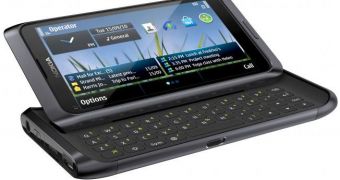
 14 DAY TRIAL //
14 DAY TRIAL // 


